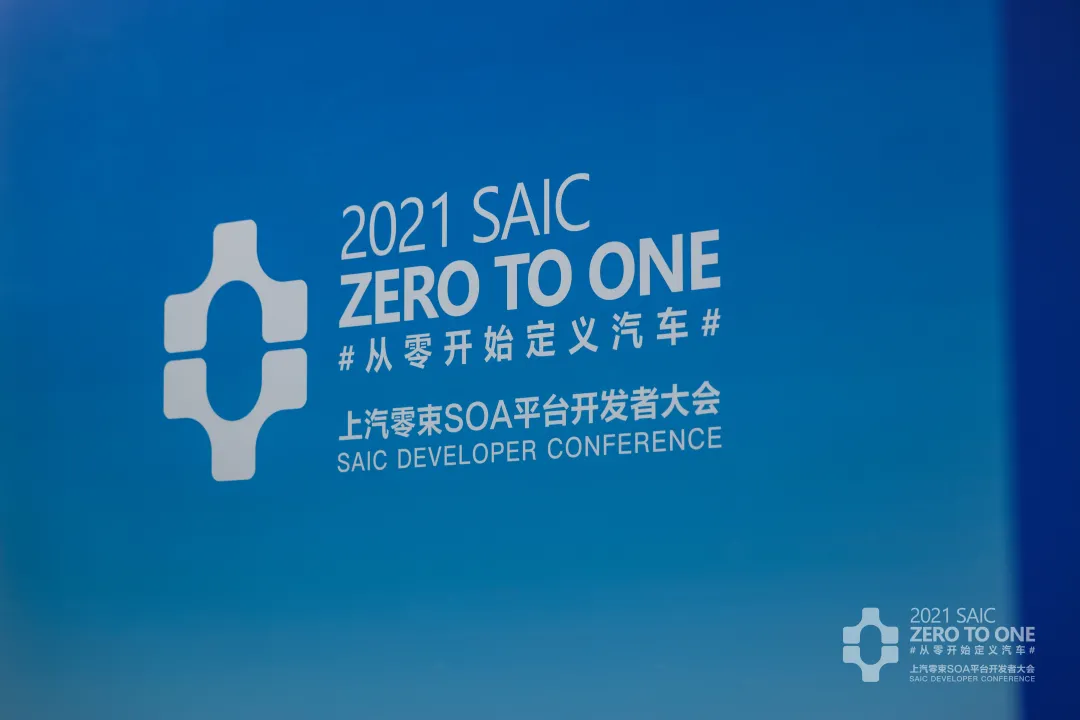*Author: Michelin
People have always had fantasies about what the future of intelligent cars will look like. Since the birth of “software-defined cars,” software has been expected to define the future of cars.
But as the variety and complexity of scenarios between people and cars continue to increase, who defines the software itself? Is it the car manufacturer, supplier, or software developer?
At the SAIC Zero Bundles SOA platform developers’ conference on April 9th, Zero Bundles presented a new way of thinking about this issue. The right to define software and car services is open, not only to suppliers and third-party developers but also to ordinary users. How is this openness achieved? And what is the SOA platform?
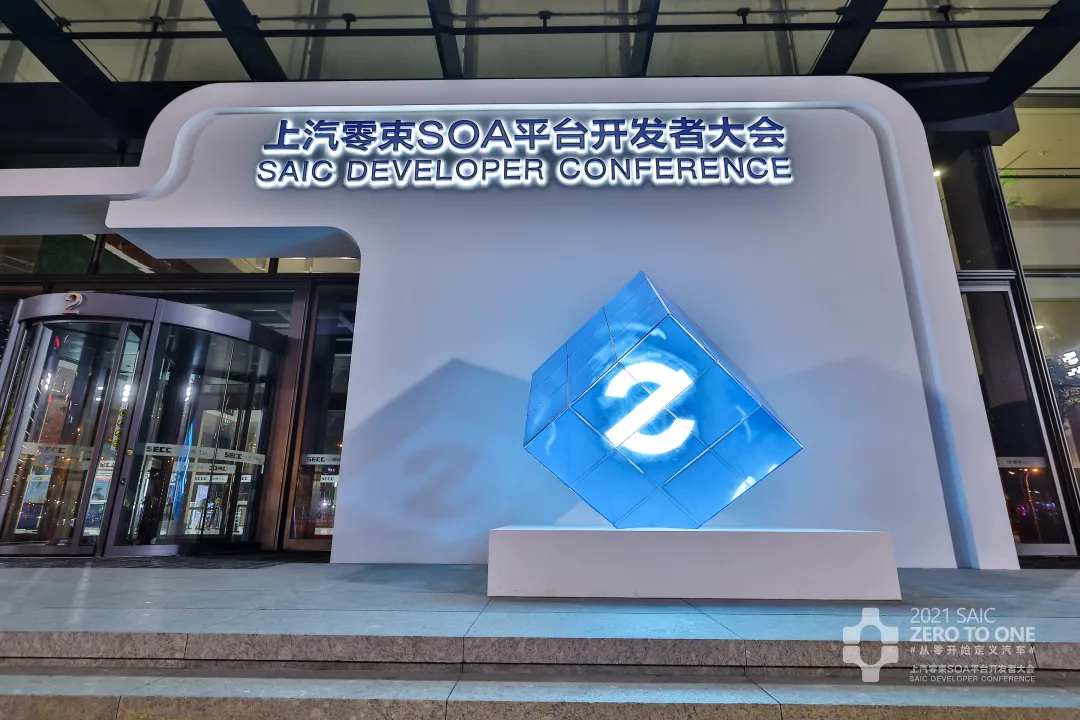
What is Automotive SOA?
SOA is a software technology that is familiar in the Internet industry. Nowadays, with the importance of software in intelligent cars increasing, SOA concepts are gradually being introduced into the automotive industry.
SOA on cars is to extract the smallest functional logical unit from each subsystem of a car, encapsulate it into a service, and compose a coarse-grained and loosely coupled service architecture. These smallest functional units are like the basic components in LEGO, which can be independently called without interfering with each other and can also be compatible with each other in various subsystems.
For example, we can take the main driver’s seat massage as a “basic component,” which can be called independently or can be combined with fatigue detection function to realize fatigue warning. At the same time, it can also be combined with other ADAS functions to achieve other warning functions.
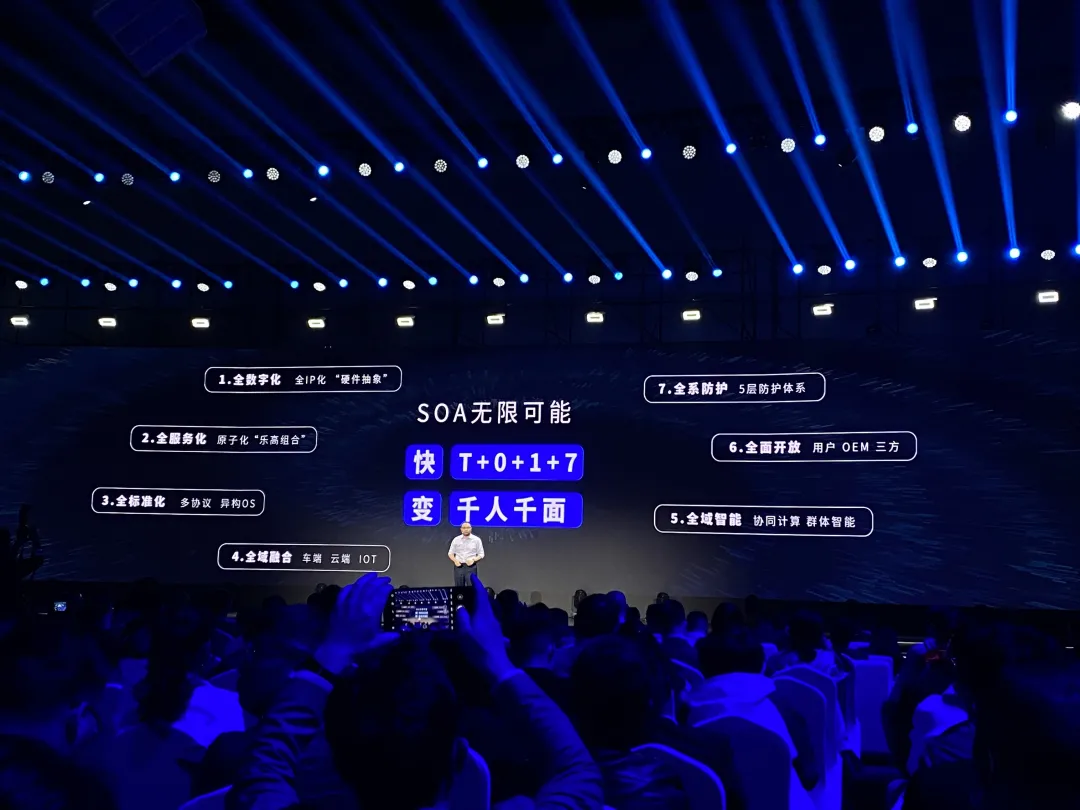
The operation of the SOA platform depends on the support of the central centralized electronic architecture, which is the intelligent car’s brain and neural network. With the central computing unit as the core, the intelligent cockpit domain, intelligent driving domain, and intelligent interconnection domain are organically organized through high-speed communication technology, which can achieve interconnection and mutual communication of the underlying functions of the whole vehicle, realize independent calling and compatible interaction of functions, atomize the software structure, and achieve the decoupling of software and hardware.
Therefore, at this SOA platform developers’ conference, we saw the Zero Bundles’ “Galaxy” intelligent automotive full-stack solution, which includes not only the SOA software platform but also the central centralized electronic architecture, the whole vehicle data factory based on IoT solutions, full-stack OTA that ensures sustainable iterative updates throughout the vehicle lifecycle, and network security solutions. These basic technologies together laid a solid foundation for the SOA open platform.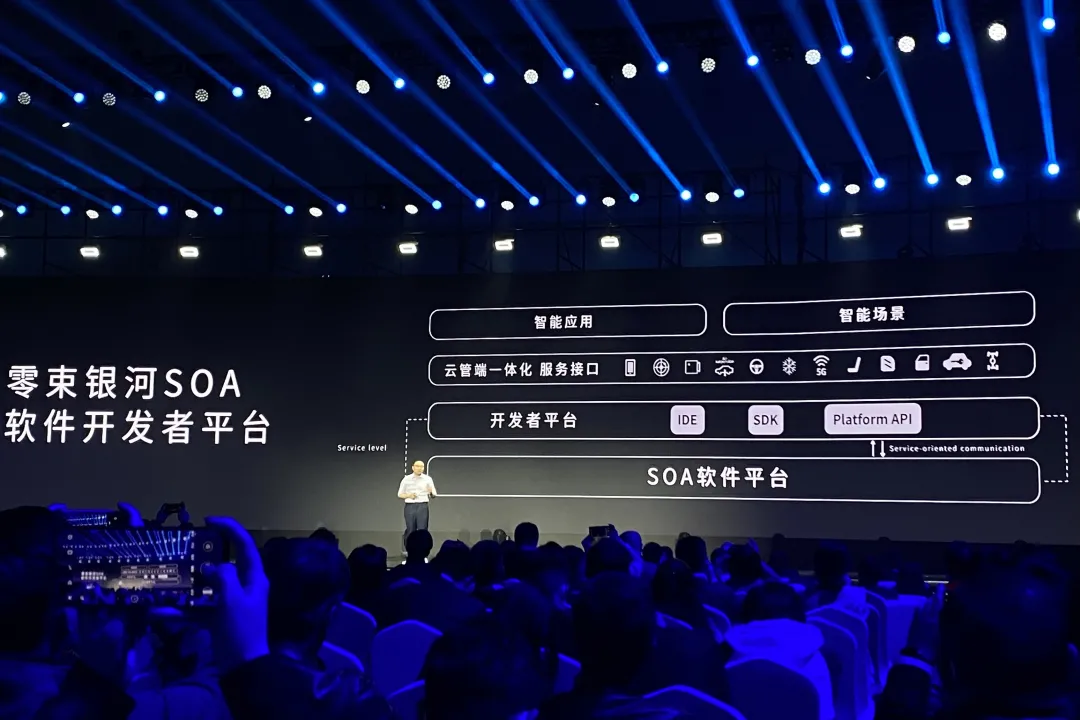
SOA Platform – Bringing “App Store” to Cars
Using the SOA (Service-Oriented Architecture) concept to create modular car functions is a major focus for many car companies nowadays. For example, BMW has been breaking down, extracting, and encapsulating the whole vehicle functions into central computing platforms, while Volkswagen is utilizing the MEB architecture to achieve software scalability and reuse.
What surprises us this time is that ZeroTie has opened up its SOA software platform entirely, allowing more third-party developers and even regular users to participate in the creation of software functions.
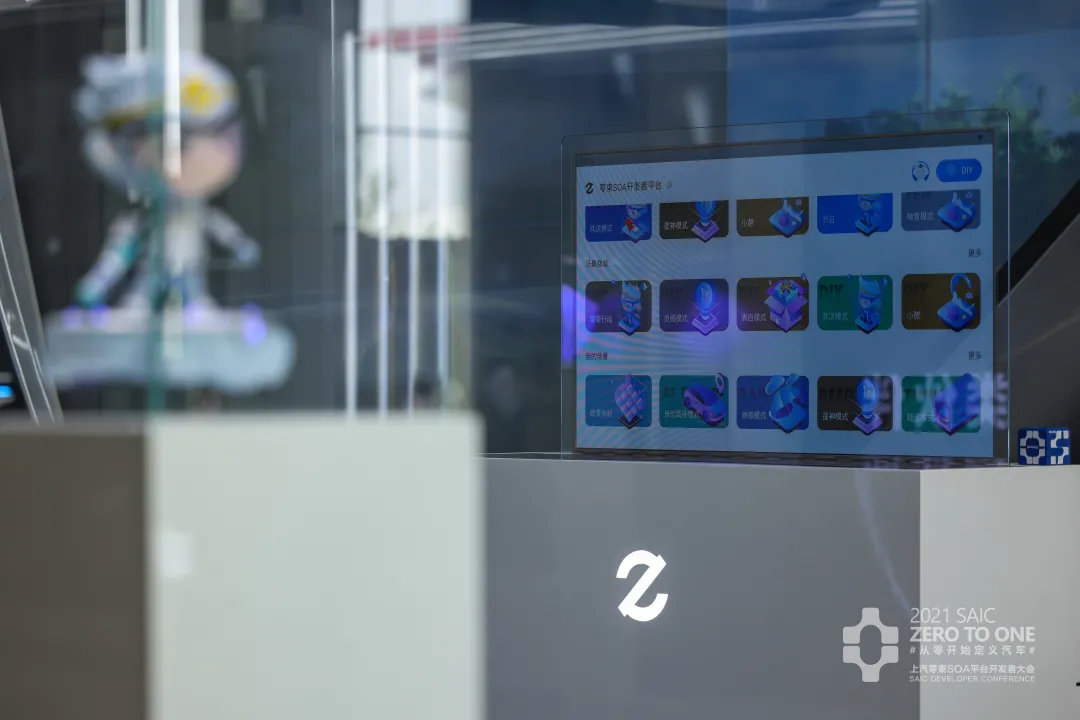
ZeroTie has encapsulated the vehicle’s intelligent control algorithms, perception devices, and execution devices into a unified, callable service, turning the SOA platform into a professional, integrated development environment. In this way, the SOA platform for cars is like an “App Store” on a phone and has become the incubator for software development.
Developers can use the callable services provided by ZeroTie to develop various services and applications and upload them to the SOA platform, while users can subscribe to their favorite services according to their needs. The services vary in function, some are free, and some require payment, like downloading apps.
In the process of building the platform, it is important to lower the barriers and allow more people to participate. Currently, the ZeroTie SOA platform is available in three modes: the Scene Workshop for regular users, the Z-ONE Studio Lite for third-party developers, and the professional edition Z-ONE Studio for OEMs and suppliers, just like three modes of “basic,” “advanced,” and “professional” for users.
The “basic” mode, or the Scene Workshop for regular users, has an interface similar to the control system on a phone, where users can customize exclusive scenes by dragging graphics and selecting parameters, and then sync them to their car with a single click. For example, setting a “birthday mode” would trigger the music player and ambient light automatically on the user’s birthday, giving a small ceremony feeling with a “happy birthday” song and so on.
This mode is not limited to customizing one’s own car settings, but users can also synchronize their settings to the platform. Watching others like and subscribe to their modes could potentially create a brand-new form of socializing.
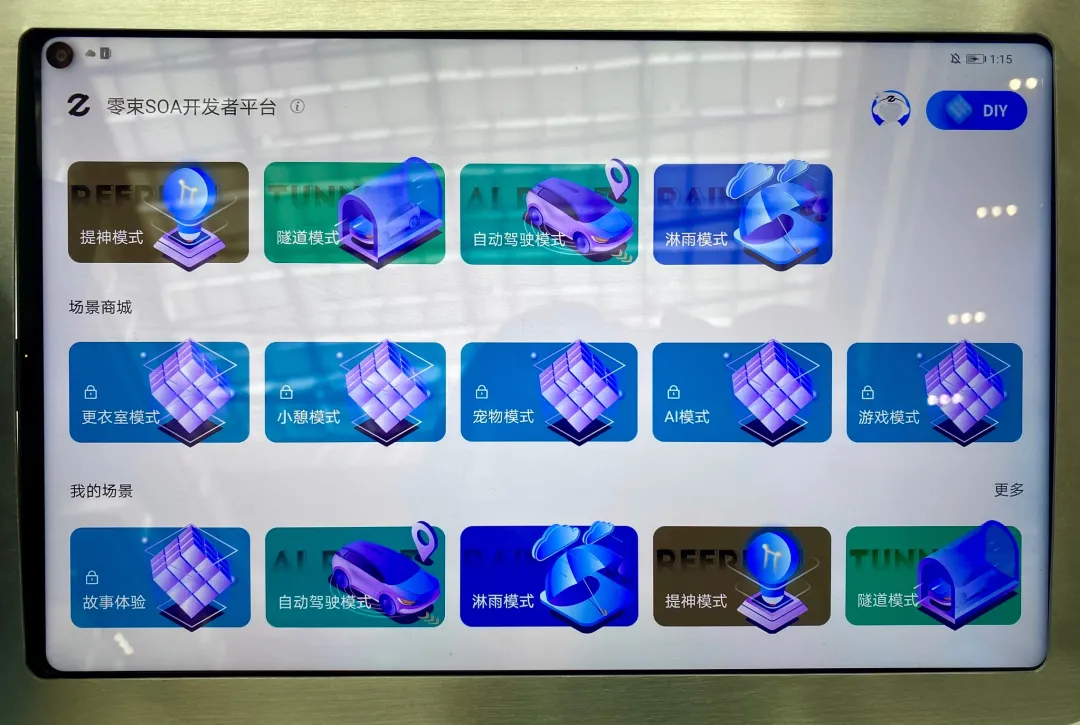 # Translation
# Translation
In the “Advanced Player Edition” of Z-ONE Studio Lite, which is aimed at third-party developers, a lightweight application architecture similar to a flowchart is used to create different scenarios by adjusting the relationships and parameters between functions in the flowchart. At the same time, the visual simulation effect on the right side of the platform can simulate the effect inside the car in real-time, making development faster and more intuitive.
If the tools for ordinary users and third-party developers are mainly based on modular combination of existing functions in the car to create different scenarios, it is still in the stage of “quantitative change”. At Z-ONE Studio Professional, we expect to see a “qualitative change” in software functionality.
Unfortunately, Zero Seiki did not show us how the Professional Edition was specifically implemented during this developer conference, which also brought us more challenges and uncertainties while expecting the SOA developer platform.
New challenges under the new mode
New attempts always face a series of new challenges, and the automotive SOA platform is no exception. We never doubt the feasibility of technology under SOA mode, but the new user-car interaction mode and new business models between developers, cars, and users brought by the SOA developer platform still bring us unknown curiosity and challenges.
For example, the crucial security issue for cars. We can accept the occurrence of crashes and other issues from apps downloaded from “App Store”, but the fault tolerance of software in cars is obviously much lower. Once functional software has problems, it may cause safety hazards during driving, which is obviously unacceptable to users and car manufacturers.
The high demand for safety places higher standards on the supervision of platforms and OEMs. Corresponding to the high-standard supervision is the increase in the admission threshold of the SOA platform, while lowering the admission threshold is what is needed to make the platform active. Only more developers participating can create stronger services and functions, attract more users; and more user participation can attract more outstanding developers to join in.
This is like a balance with high standards and requirements on one end and low thresholds to attract more participants on the other end. The difficulty of this challenge can be imagined.
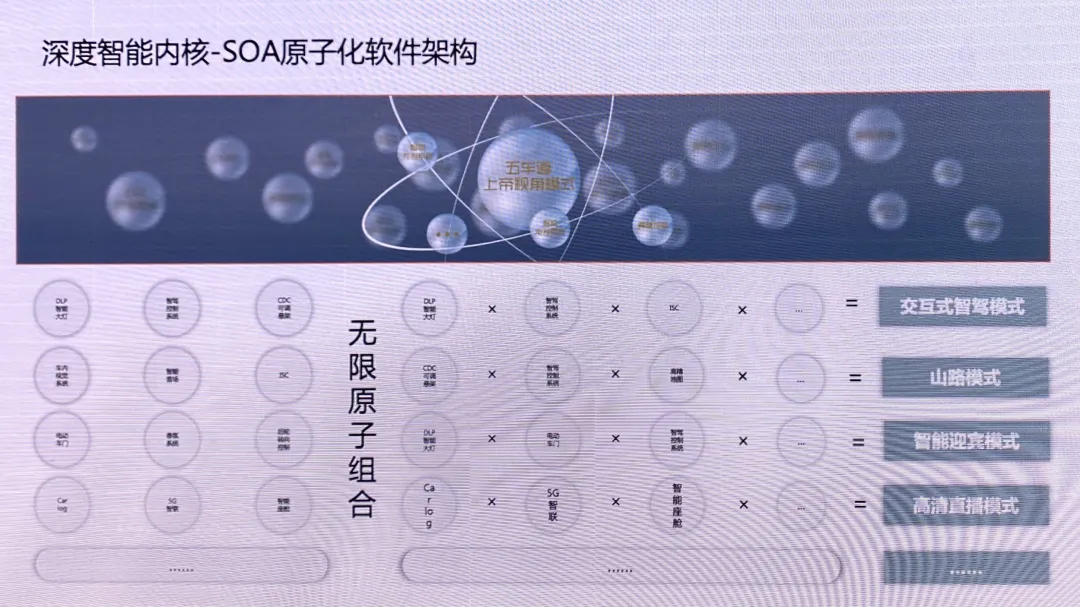
In addition to security issues, the massive data carried by the huge mobile carrier of intelligent cars has also posed considerable challenges. To the car itself, the purpose of the centralized electronic architecture with the underlying connectivity is to achieve interoperability of functions and data sharing. However, not all data is suitable for “sharing”, so efforts need to be made in classifying and rating data.Besides, the data involved not only the electronic architecture itself. For instance, when it comes to the data generated by third-party developers, should it belong to the developers or the automakers?
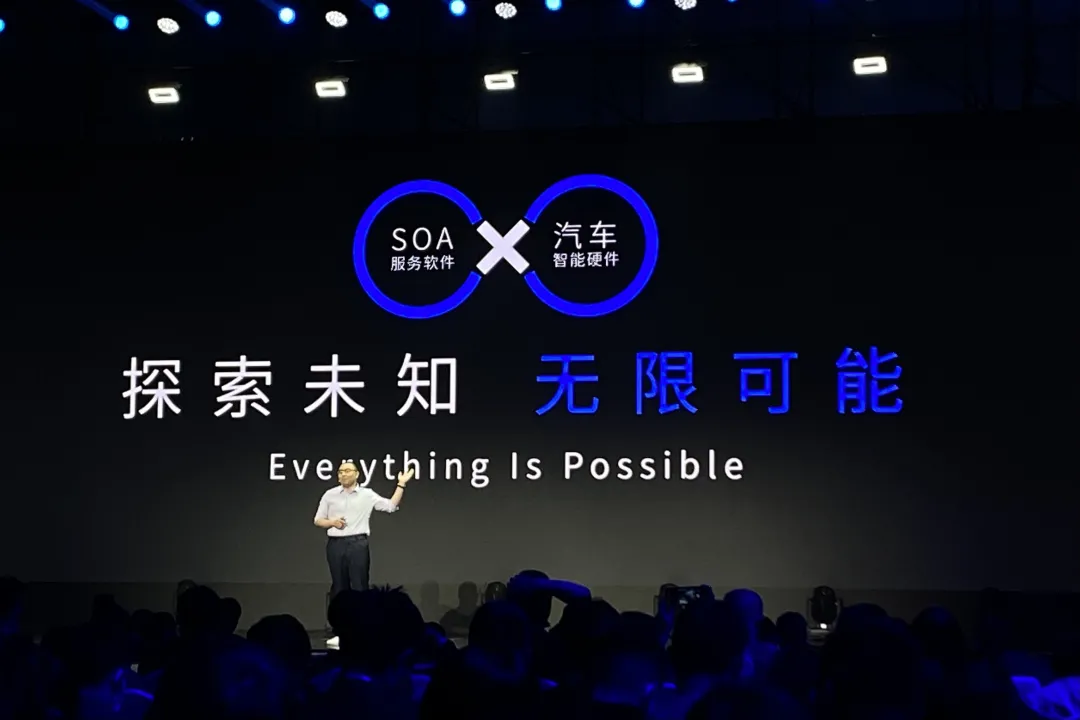
Moreover, how to motivate developers to actively participate in the SOA platform is also a big challenge. A software developer only needs to develop Android and iOS versions when developing mobile software. However, when the software is applied to cars, it needs to face countless car brands and models.
Currently, the Zero-Shot SOA platform allows software to be universal in SAIC’s R cars and Ziji cars. But what developers really expect is more car models to join in which can reduce the marginal cost of software development.
The problem associated with high development costs is how the developer platform will achieve commercialization. In the current cockpit usage scenario, it is impossible to realize income closure like mobile apps. We can directly buy services and products on our mobile apps, but when similar buying behavior occurs on car software, our first reaction is to pull out our phone and scan it, making it impossible for in-car software to directly generate revenue from users….
Without clear profit sharing, simply motivating developers by download volumes seems not sufficient.
Finally
Although there are still many speculations and potential challenges that have not been answered in the current SOA open platform, the release of Zero-Shot SOA platform has enabled us to see the automobile software’s attempt to embrace users and a new possibility for future business exchanges.
As for how far SOA can go, it not only requires efforts from Zero-Shot and SAIC but also requires the participation of more suppliers and even the entire automobile industry to jointly define everyone’s rights to software.
This article is a translation by ChatGPT of a Chinese report from 42HOW. If you have any questions about it, please email bd@42how.com.
